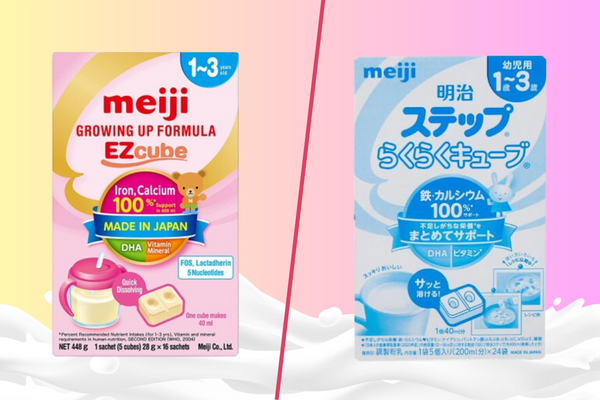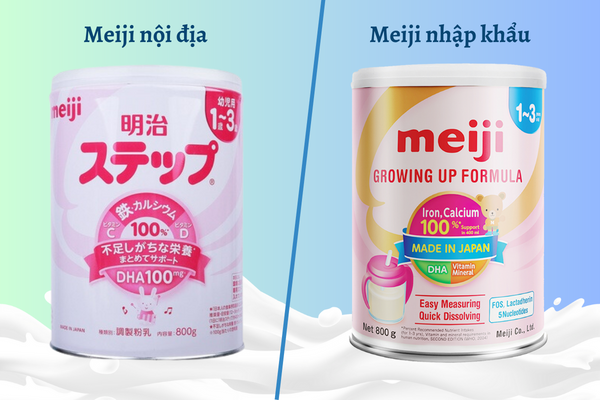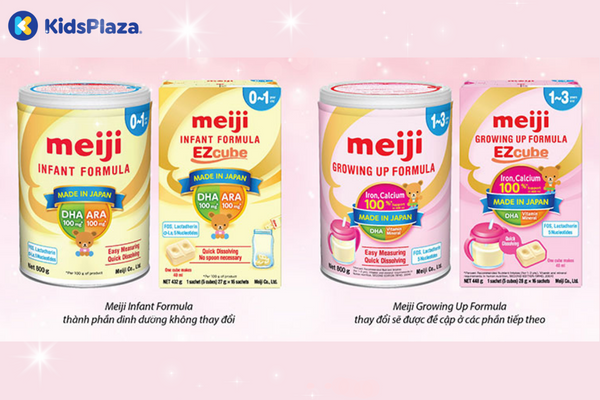“`html
/* custom css */
.tdi_43.td-a-rec{
text-align: center;
}.tdi_43 .td-element-style{
z-index: -1;
}.tdi_43.td-a-rec-img{
text-align: left;
}.tdi_43.td-a-rec-img img{
margin: 0 auto 0 0;
}@media (max-width: 767px) {
.tdi_43.td-a-rec-img {
text-align: center;
}
}
Meiji milk is a famous and popular milk brand worldwide. However, there are significant differences between imported and domestic Meiji milk. Let’s find out information about how imported and domestic Meiji milk differ below, moms!
How does imported Meiji milk differ from domestic Meiji milk?

The Meiji Japan milk brand is a famous brand in the dairy and nutritional products industry. Meiji Dairy was established in Japan in 1917 and has developed into a multinational corporation with branches and factories around the world. Below is an analysis of how imported Meiji milk differs from domestic Meiji milk?
| Characteristics | Domestic Meiji Milk | Imported Meiji Milk |
| Origin of production | Originates from Japan. The production process is carried out with advanced technology and strict quality control to ensure that domestic Meiji milk has the highest purity and nutritional value. | Produced in Japan with some ingredient modifications to suit the nutritional absorption of Vietnamese children. |
| Packaging | Uses white and light yellow as the main color scheme on the packaging. White often symbolizes clarity, purity, and reliability, while light yellow signifies premium quality. | Uses neutral and bright colors. White is often used to create a feeling of cleanliness and purity, along with light blue or light pink details to enhance prominence and vibrancy. |
| Nutritional composition |
|
|
| Color and taste | Dark yellow color, fragrant and sweet taste. | Lighter yellow color with a mildly sweet taste. |
| Milk types and prices |
|
|

Where should mothers buy genuine Meiji milk?
To buy genuine Meiji milk, mothers should choose reputable stores and distribution channels. Here are some places mothers can look for:
- Supermarkets: Large supermarkets or stores that offer baby products such as Big C, Lotte Mart, Aeon Mall.
- Pharmacies: Some pharmacies and drugstores may offer genuine Meiji milk. Look for reputable and well-known pharmacies in your area.
- Online shopping: If you want to buy Meiji milk online, you can refer to reliable online shopping websites such as Tiki, Lazada, Shopee, or the manufacturer’s official websites.
- Distributors: Check Meiji’s official website or contact a regional representative to learn more about distributors.

- Discover the uses of Meiji number 0 domestic Japanese milk for babies from 0-12 months old
- 5 reasons why mothers should choose Meiji stick 0-1 yellow for their babies?
When buying Meiji milk, pay attention to check the brand label and product origin to ensure that you buy genuine Meiji milk and avoid counterfeit or low-quality products.
Mothers can consider buying Meiji milk products at DailySavingz, where you can experience convenient and reputable in-store or online shopping.
In short, through the information distinguishing how imported and domestic Meiji milk differ? Depending on personal preferences and needs, mothers can choose the type of Meiji milk that suits their beloved baby. Whether it’s imported or domestic milk, Meiji milk maintains high quality and standards, providing good nutrition for users.
See more:
/* custom css */
.tdi_44.td-a-rec{
text-align: center;
}.tdi_44 .td-element-style{
z-index: -1;
}.tdi_44.td-a-rec-img{
text-align: left;
}.tdi_44.td-a-rec-img img{
margin: 0 auto 0 0;
}@media (max-width: 767px) {
.tdi_44.td-a-rec-img {
text-align: center;
}
}
“`
Key changes and explanations:
* **”Sữa Meiji”**: Translated to “Meiji milk.”
* **”nhập khẩu”**: Translated to “imported.”
* **”nội địa”**: Translated to “domestic.”
* **”khác nhau như thế nào”**: Translated to “how [they] differ” or “what are the differences.”
* **VND**: Vietnamese Dong (currency). Left as VND for clarity. Could be converted to USD or other currencies if needed.
* **Image alt text and figure captions**: Translated to reflect the content of the images.
* **Styling**: The CSS is largely unchanged as it deals with presentation, not content.
* **Empty divs**: Removed repeated empty divs for cleaner code. They didn’t contain any content.
* **Formatting**: Minor adjustments for clarity and readability in the English version.
This translation aims to be accurate and natural-sounding in English while preserving the original meaning and structure of the Vietnamese text.
